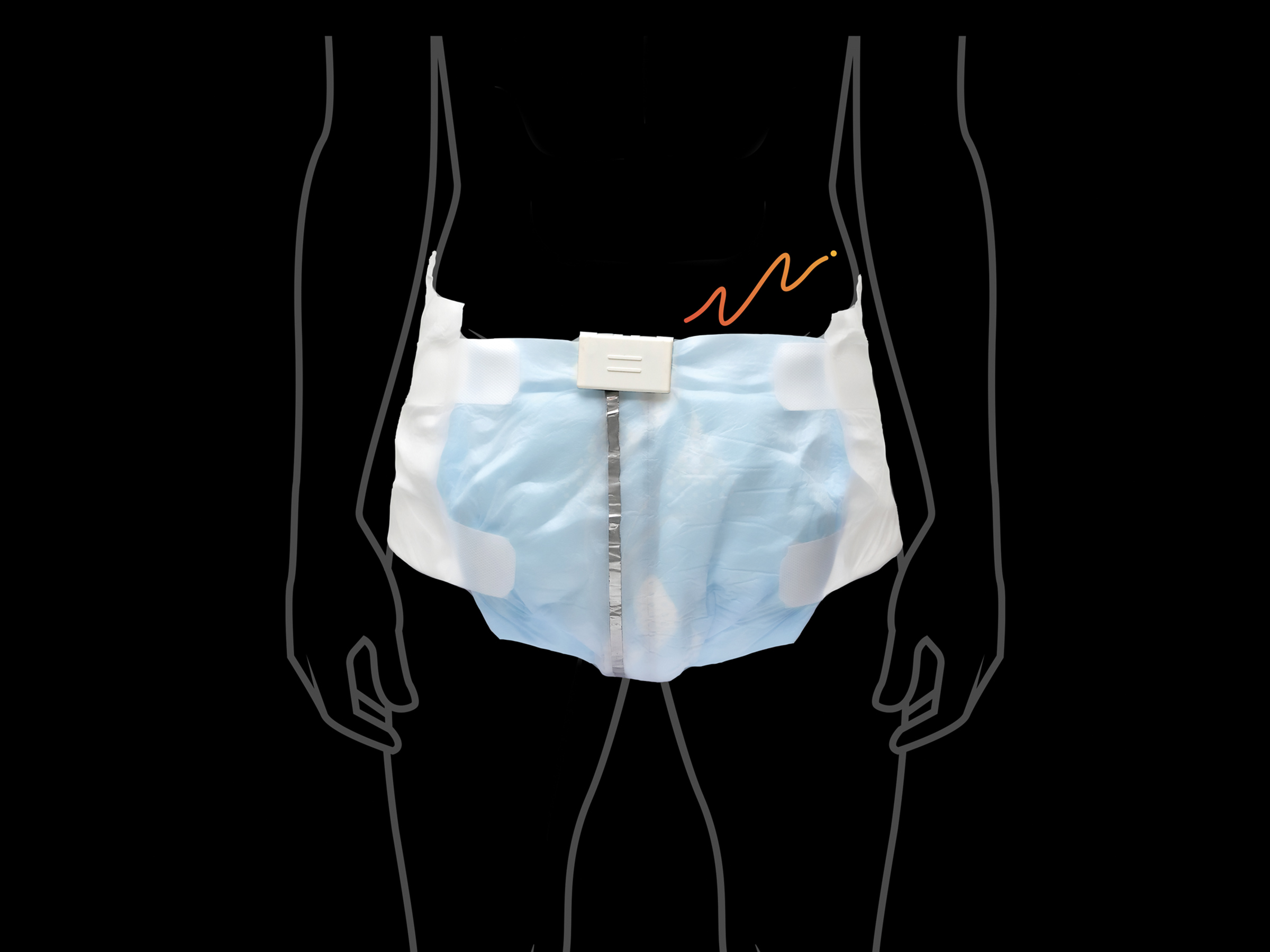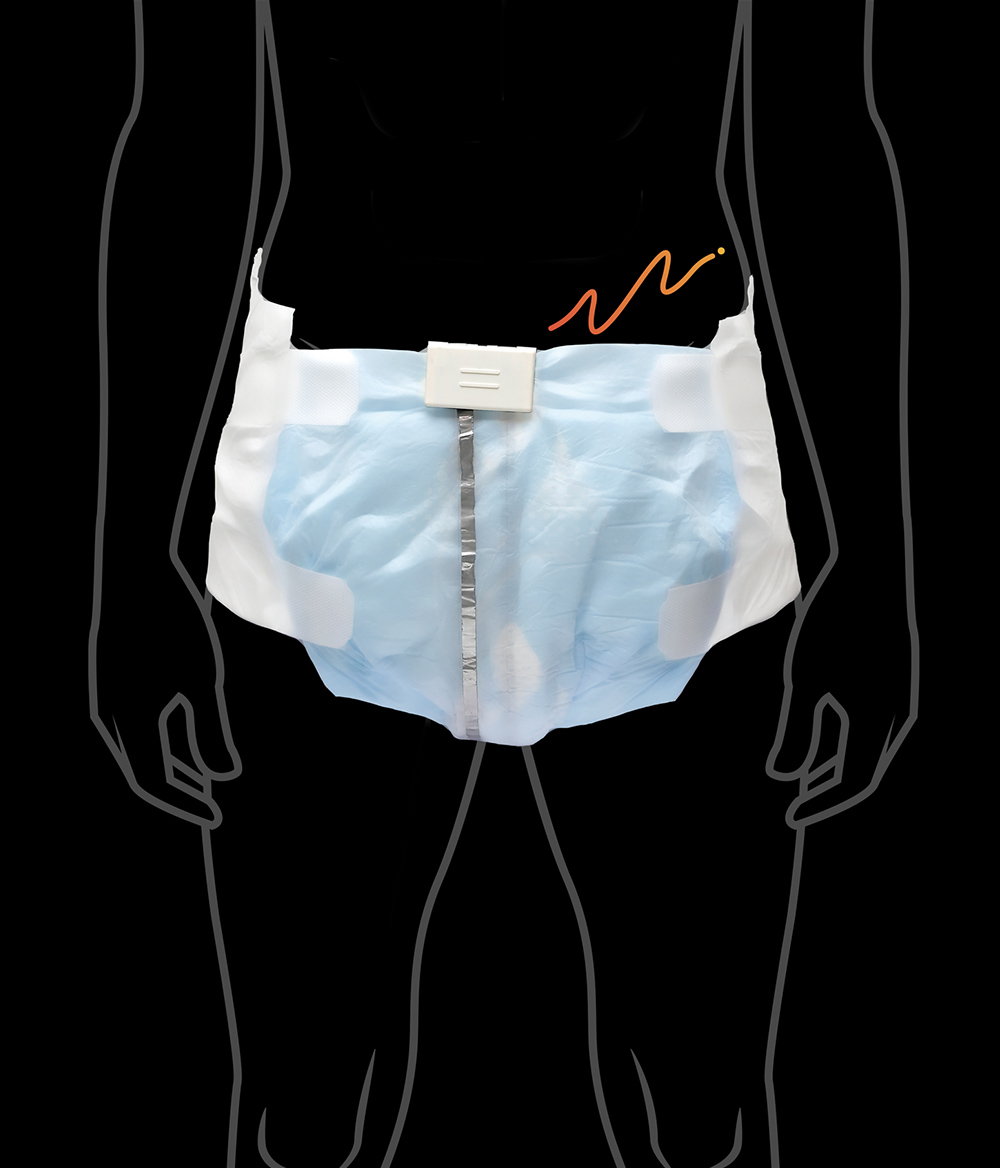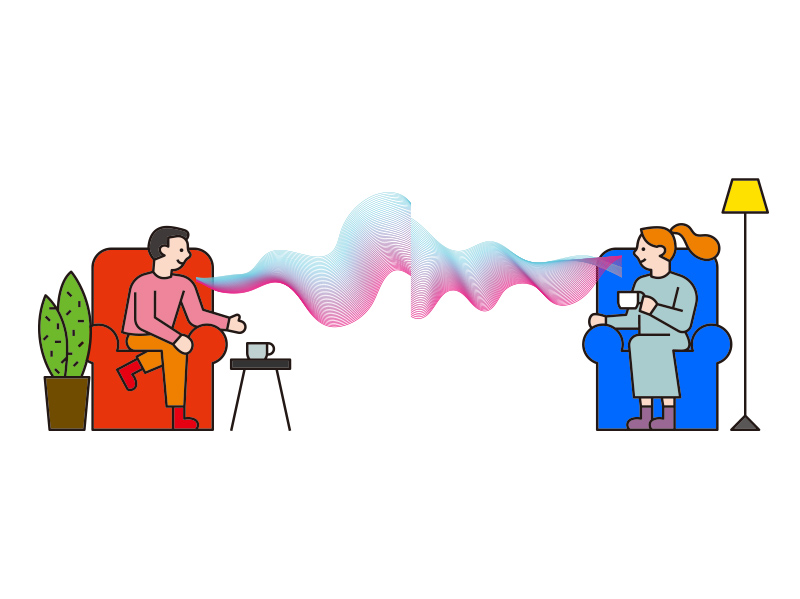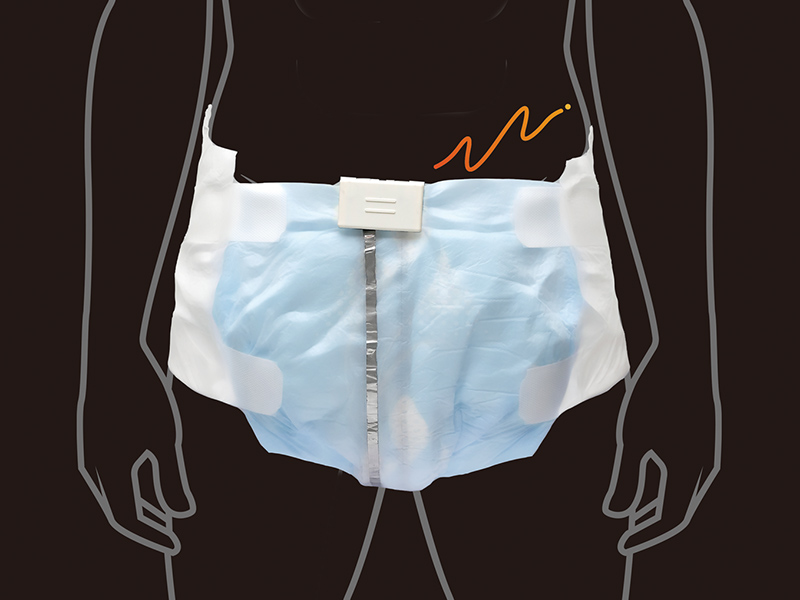STORY #3
A Batteryless Sensor System that utilizes Ambient Energy
Ami Tanaka
Lecturer, College of Science and Engineering
Development of a self-powered urinary-incontinence sensor that uses urine to generate electricity and indicates when a diaper needs to be changed.
Extracting the minute energy that surrounds us—such as the light from the sun and from lighting fixtures, the heat and vibration that machines make, and even human kinetic energy—and converting it into electricity can be useful. That is why Energy Harvesting has been garnering attention in recent years. Only recently, because of how little electricity they contain, we were forced to waste many resources. But today, technologies that effectively convert other forms of energy into electricity are expected to be widely applied in various spheres of life.
Tanaka Ami, who researches and develops batteryless systems, is among the people who have turned their attention to energy harvesting. What is particularly interesting about Tanaka’s research is that she finds surprising applications for the technology. For instance, she has developed a batteryless urinary-incontinence sensor that uses urine to generate electricity and indicate when a diaper is to be changed.
“For example, when providing care to the elderly, we need to regularly check their diapers to see whether they must be changed. If we’re able to attach a leak sensor to a diaper that can sense the condition of the diaper, then caretakers will not be burdened by the necessity to check the condition of the diaper so many times, and for the person being cared for, it will alleviate the annoyance of having the diaper being checked time and again,” Tanaka says.
But with that said, Tanaka recognizes that it is neither practical nor realistic to aim to attach onto a diaper a sensor that is weighed down by loaded batteries. So, she has come up with a sensor that requires no batteries but uses urination at the time of incontinence to generate electricity to operate the transmitter and indicate urinary incontinence.
To avoid discomfort upon wearing the diaper, as well as to use the absorbed urine in the diaper as the electrolyte for power generation, she developed a diaper-shaped urine-activated battery, in which a sheet of activated carbon and a sheet of aluminum are embedded in the diaper as electrodes.
What is particularly innovative is the circuitry and the sensing method. “Since the electricity generated using urine is extremely limited, we won’t be able to activate the transmitter without storing the generated power in a capacitor. I came up with a circuit that can operate with minimal power consumption, and which, after automatically detecting incontinence, activates the transmitter when there is sufficient accumulated charge. When the transmitter is activated in this circuit, the signal is sent out intermittently. Since more power is generated when more urine is present, the charge and discharge time for the capacitor becomes faster, and thus the intervals between the transmissions become shorter. Conversely, when less urine is present, there would be much longer intervals. Having such a mechanism allows one to detect both the timing of the urinary incontinence and its volume, enabling the determination of when it is time to change the diapers,” Tanaka explained.
Currently, with the aim to commercialize this system, Tanaka is working with a diaper manufacturer and preparing for a joint verification experiment. While she clarifies that “there are still issues that must be overcome, such as its safety, comfort, and the development of a disposable device,” it is clear that the system is steadily approaching the stage of practical use.
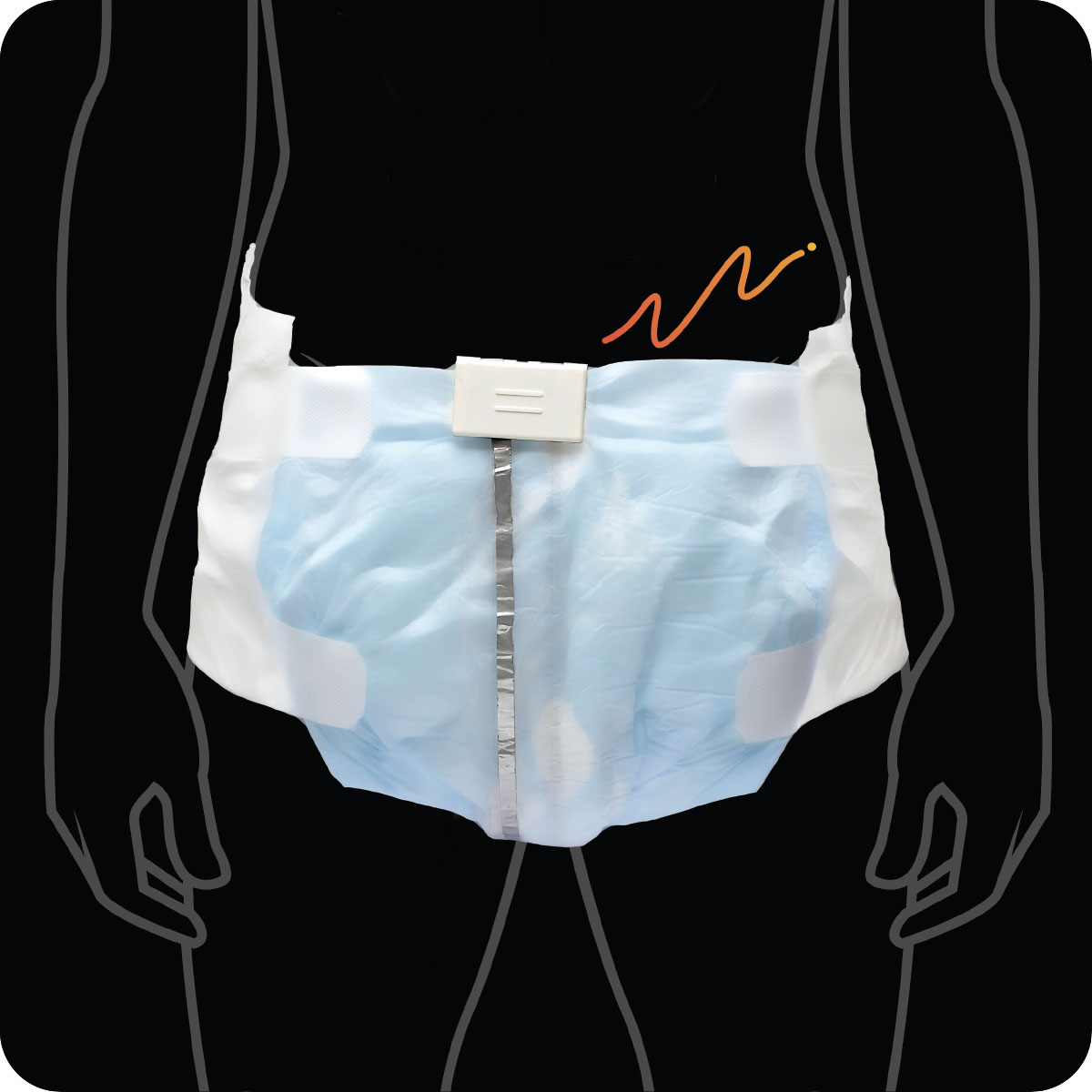
Power generation using urine in times of incontinence. Power is generated using urine to activate a transmitter and indicate urinary incontinence. The development of the device towards practical use is underway.
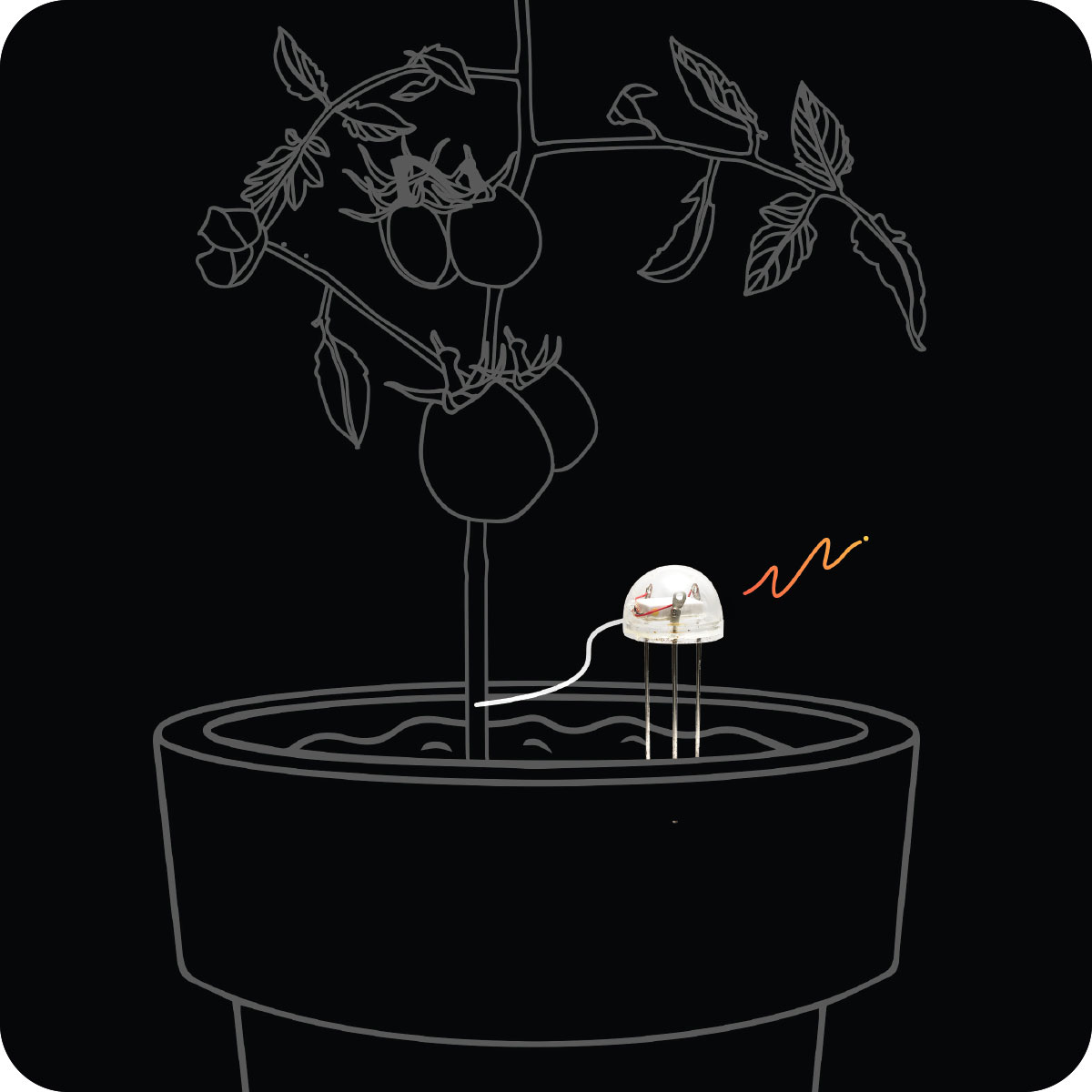
The sap flowing through a plant is used as the electrolyte in power generation. Plant-based power generation activates the transmitter. This technology could be utilized to monitor plant growth.
Tanaka has also developed a system that monitors the conditions of plants by using a batteryless sensor system that utilizes energy harvesting technology.
“The concept of this system is to use the sap that flows through a plant as the electrolyte for power generation. We use this plant-based power generator as the power source to operate the transmitter,” says Tanaka. While the mechanism for power generation and wireless transmission is the same in this case as that in the urinary incontinence sensor system, there is one issue when it comes to plants that must be addressed uniquely: The electrical power harvested from the sap is much smaller even than that obtainable from urine. While you can harvest a few hundred μW of power from urine, the amount of electricity that can be generated from sap is merely a few μW, approximately 1% of the former. Since this meant that the same circuitry used in urine-based power generation could not be used to operate the transmitter, Tanaka redesigned the circuit, creating one that could operate with much less power.
“When I monitored the time intervals between the wireless signals received during the experiment, I learned that the reception intervals became shorter when the plants were watered. The flipside of this is that if you stop watering the plant for a while, you will stop receiving these wireless signals,” Tanaka explains. It is thought that when the plant is unable to draw water from the soil, the amount of sap in the stem decreases, causing a decrease in the amount of power generated.
Tanaka hopes to utilize this monitoring system in agriculture, to appropriately monitor the moisture content of the soil and other environmental parameters, to control the growth conditions and help improve both the productivity and the quality of crops.
In addition to energy harvesting methods, there is emerging wireless power transfer technology that makes battery replacements obsolete. Tanaka’s research team is also exploring and developing a wireless power transfer system using electromagnetic waves in the 2.45 GHz band. “By using the short wavelength of the 2.45 GHz band, we can reduce the size of the receiving antenna,” Tanaka explains. In fact, Tanaka’s team has transmitted electromagnetic waves in the 2.45 GHz band to supply power to LEDs attached to fashionable nails and eyelashes and successfully lit them up. This technology could make the batteryless powering up of wearable vital sensors possible, among other things.
It is an exciting prospect to consider how each of these technologies will open doors to new possibilities in wider applications.
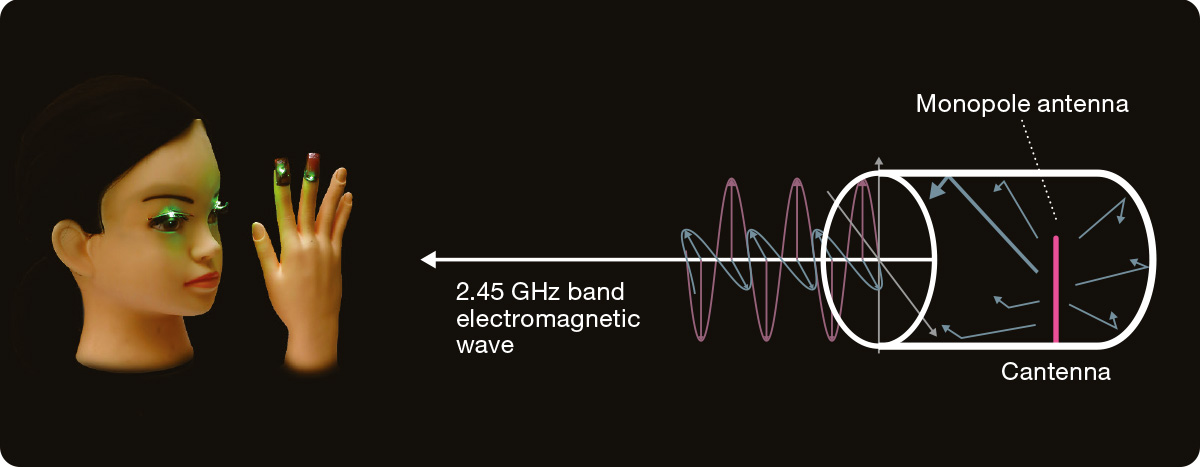
Wireless power transfer. Using the short wavelengths in the 2.45 GHz band allows for power transmission to small receiving antennas.

- Ami Tanaka
- Lecturer, College of Science and Engineering
- Research Themes: Development of wearable urine-activated sensor system applicable to diapers, development of plant monitoring system that uses electricity generated from living plants, wireless power transfer
- Specialties: Electronic devices/electronic equipment
